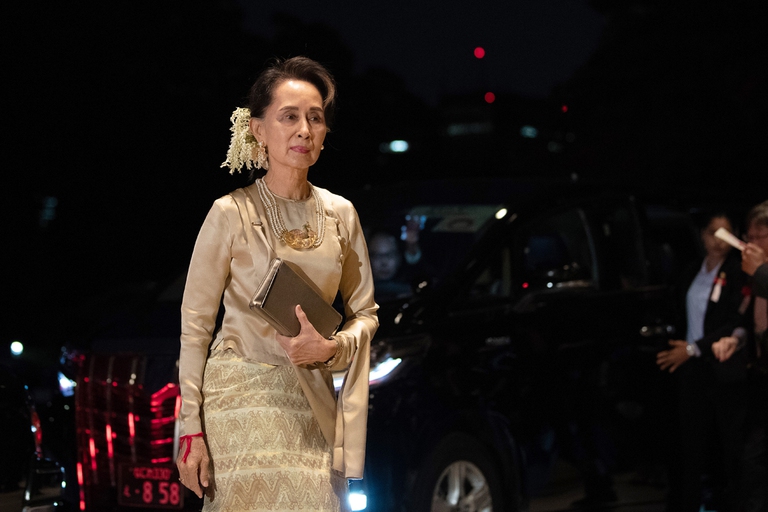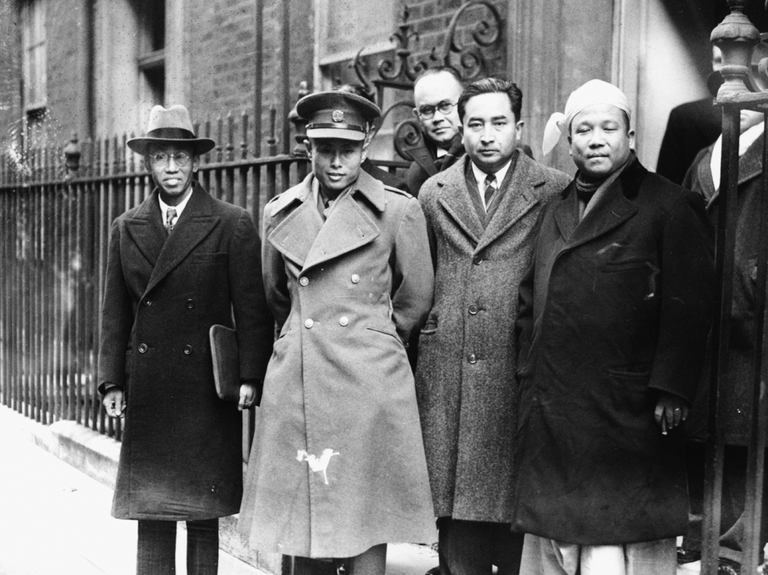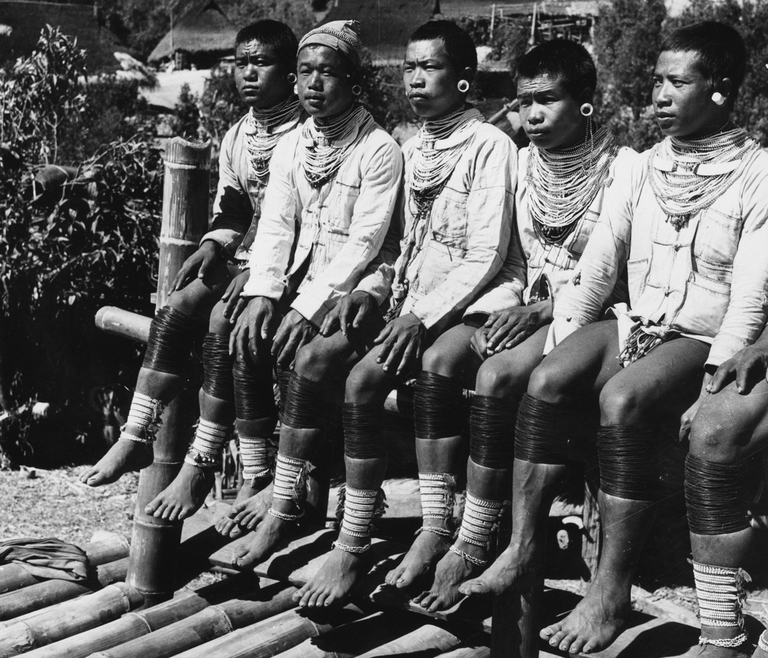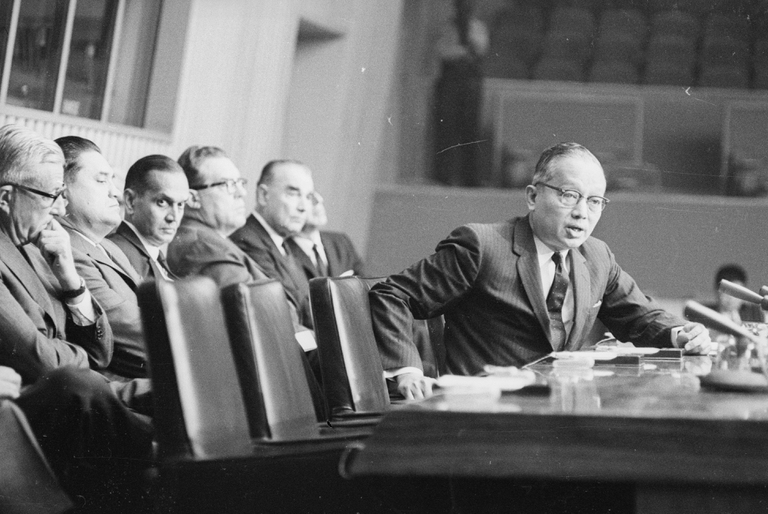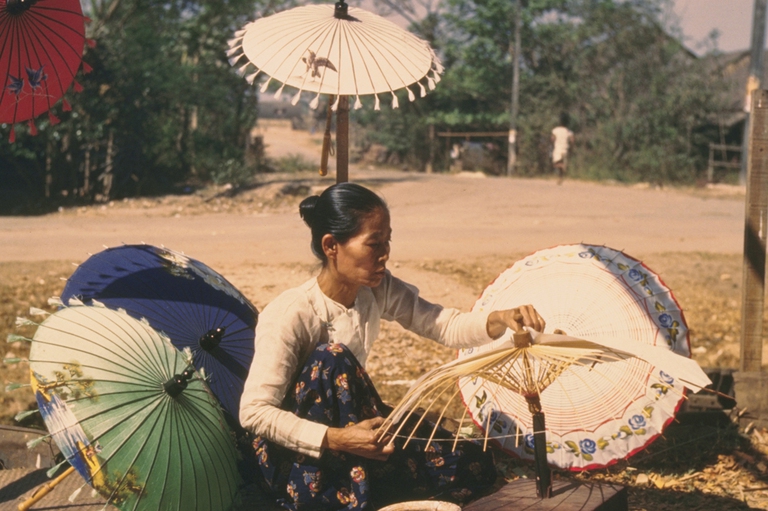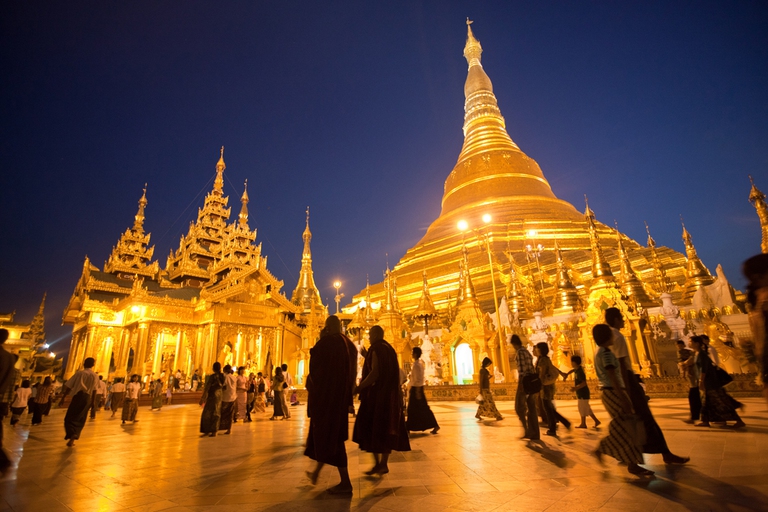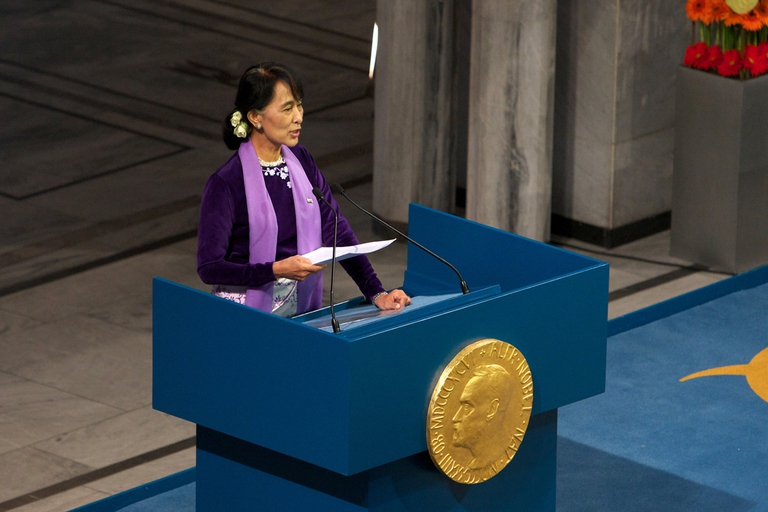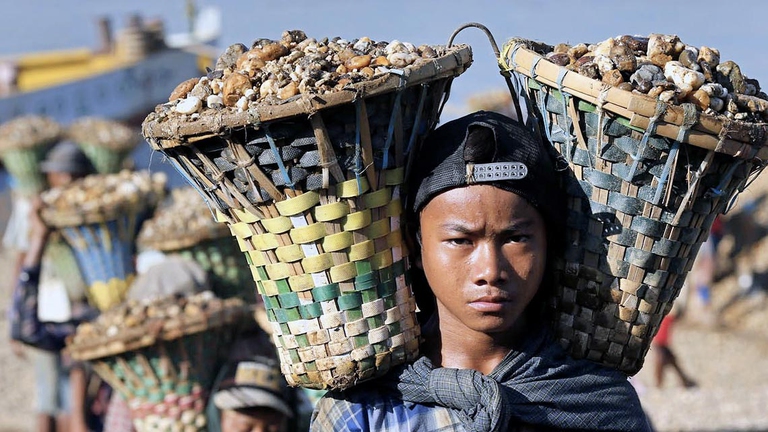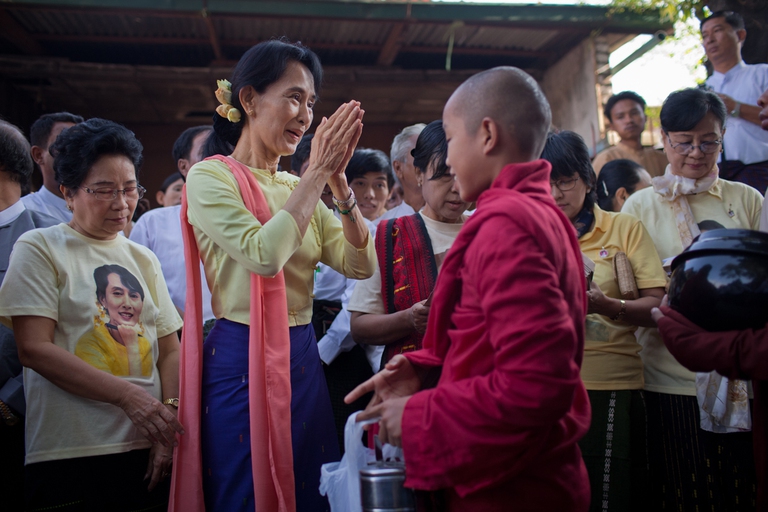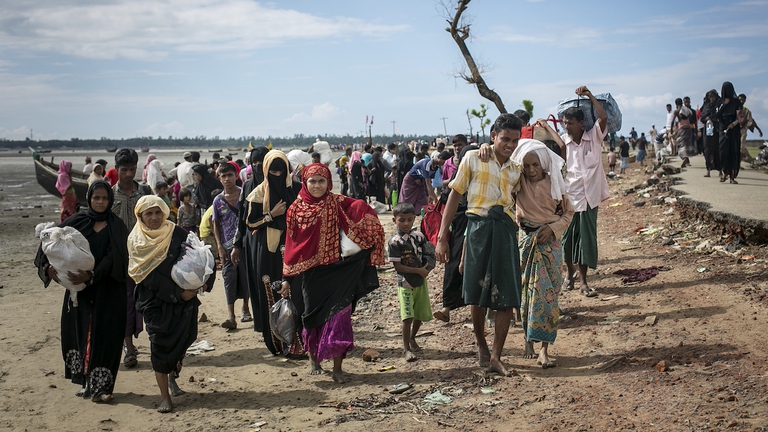
As per tradition after 12 years India held Mahakumbh, the world’s largest spiritual congregation that has been attracting pilgrims from across the globe.
Nobel Peace Prize winner Aung San Suu Kyi’s biography is tied with that of her parents and the history of Myanmar (formerly Burma). A story marked by nationalism, Western influence and compromises with the military.
“The biography of Aung San Suu Kyi (also known by her initials, ASSK) is closely tied with the history of her family, and with the history of Myanmar (formerly Burma). Her path has been one of light and shadow, sometimes falling into darkness, influenced by nationalism, Western influence, and devotion to the Army that her father founded. Her idea of democracy, although it was supported by Western forces for about twenty years, is rooted in Asian tradition, where the military has often played a prevailing role. Even her vision of a nation, which has never been fully realised since Myanmar gained independence from Britain in 1948, is not separate from the country’s main religion, Theravada Buddhism. These facts make it easier to understand why the leader in Myanmar’s fight for democracy doesn’t entirely correspond with the activist image popularised in Western media, an image which ASSK recently rejected.
Myanmar is perhaps the final frontier for foreign businesses in Asia, and it benefits from its strategic location between India and China. The latter is Myanmar’s main economic partner. International politics often come into play here. Aung San Suu Kyi knows this well: she was permanently freed from house arrest precisely when the military leadership changed into civilian clothes and opened the country’s doors to neoliberalism. Since then, “The Lady” has stopped opposing the generals, even when they ordered the ethnic cleansing of Rohingya Muslims, forcing hundreds of thousands of people to flee to Bangladesh. To appease the Bamar Buddhist electorate and avoid compromising the civilian part of the government, Aung San Suu Kyi has denied what the UN has called war crimes and crimes against humanity. For many of the country’s citizens – belonging to the Bamar majority or other minorities – ASSK remains the only thing standing between them and absolute dictatorship. However, can a politician who repeatedly accommodates those who violate basic human rights really be said to be a champion of those rights?
Aung San Suu Kyi‘s life begins on 19th June 1945 in Rangoon (now Yangon), the capital of Burma when it was a British colony (1824-1948) and from independence until 2006. A month before her birth, the British wrested control of the city back from the Japanese, who had invaded in January 1942. Yangon – founded in the 11th century and ruled over for centuries by ancient dynasties – has infrastructure and public services comparable to those in London. In Europe, Nazi dictator Adolf Hitler has surrendered, while in Asia the end of World War II will come on 2nd September, with the defeat of the Japanese Empire.
ASSK takes her first steps alongside her country, which is heading toward becoming a republic, independent from the British empire. Her father, Aung San, is leading this process, and she will inherit not only his name but also the inspiration and ideology that will mark her political future. Aung San is assassinated when Suu Kyi is only two years old. However, her story is like that of an heir apparent.
It’s probably her mother, Khin Kyi, who passes on to ASSK the art and science of politics and keeps alive the memory of her father until she is an adult. Khin Kyi is a former nurse, who had met her future husband in a hospital during World War II. She is a strong-willed, educated woman. Against her family’s wishes, she leaves her village and moves to Rangoon to work at the General Hospital. In 1942, aged 30, she marries Aung San, whose war wounds she had nursed. Their union is strong. They will have four children, and Khin Kyi will go on to take her husband’s seat – left vacant after his assassination – in Burma’s first independent parliament.
Khin Kyi, after losing her husband and two children, has a brilliant political career. In 1953, she becomes Burma’s social welfare minister. In 1960, she becomes her country’s first woman at the head of a diplomatic mission: she is appointed to be the Burmese Ambassador in New Delhi when Jawaharlal Nehru is India’s Prime Minister. She brings her fifteen-year-old daughter Aung San Suu Kyi with her to India, while her older son, Aung San Oo, goes to England to study. Nehru arranges for them to live at “Burma House”, which is now the headquarters of the Indian National Congress.
Let’s go back to Aung San. He’s a complex, quasi-mythical figure in Myanmar, where he’s still seen as the “father of the nation”. He died without seeing his dreams of independence fully come to pass. Born in February 1915, he could be described as a “pragmatic and shape-shifting revolutionary”, who can change his political stance and allies but maintains a strong nationalist belief and the goal of independence from the British. Burma still doesn’t exist as a country for him, being divided among kingdoms, feuding dynasties, and regions inhabited by many different ethnic groups.
Aung San grows up in a family of revolutionaries. In 1886, his grandfather had been decapitated by the British while fighting in the last of the three Anglo-Burmese wars. Even his parents were part of a movement of anticolonial resistance. In the 1930s, he becomes the most renowned student leader at Rangoon University, organising many anti-imperial strikes. In 1938, he abandons his legal studies to dedicate all of his energy to politics. In 1939, he is among the founders of the nationalist wing of the Burmese Communist Party. In 1940, however, he takes refuge in Nazi-allied Japan, where he is offered military training alongside 29 other compatriots. The Thirty Comrades, as they will later become known, also include Ne Win, the man who, in 1962, will overturn the fragile Burmese democracy and establish a military dictatorship. The very system Aung San Suu Kyi will end up fighting half a century later.
Drawn by the promise of independence, Aung San collaborates with the Japanese for almost the entirety of World War II. Thanks to their support, he is able to create the Burma Independence Army while in Bangkok, Thailand. The BIA will one day become the current Tatmadaw. In 1942, he takes part in the “Burma Campaign”, through which the Japanese invaders take the place of the British. Aung San is appointed to the position of War Minister but in 1944 he realises that Burma, in Emperor Hirohito’s eyes, is just another colony to tyrannise. Time for Aung San to change course once more. ASSK’s father starts to restore old connections with British authorities and his old communist comrades. On 27th March 1945, he turns the Burmese Army against the Japanese and helps the Allies defeat them.
It’s a delicate time. The new anti-fascist front, of which he is the leader, splits. Communists are expelled. The negotiations with Britain are complicated. In exchange for Burma’s independence, Britain requires it to become a member of the Commonwealth. Aung San firmly opposes this, wanting complete independence. Winston Churchill calls him a “rebel traitor”. But the General doesn’t change his goal. At the historic Panglong Conference, on 12th February 1947, Aung San brings together the leaders of the most populous ethnic groups, convincing many of them to join a united independent Burma. However, rivalries and divisions run deep. Karen delegates don’t recognise the new state as theirs, and they get ready to fight.
In April, the Anti-Fascist People’s Freedom League (AFPFL), purged of its radical left-wing, wins the elections. The government Aung San is setting up, however, will never be a reality. On 19th July 1947, a group of paramilitaries – likely under orders from former Prime Minister U Saw – kill Aung San, seven ministers, a secretary, and a guard. U Saw, a representative of the pro-British past, had the support of former Governor Sir Reginald Dorman-Smith. Aung San, on the other hand, was favoured by Governor Sir Hubert Hance and by Lord Mountbatten, the last Viceroy of India. His assassination is still shrouded in mystery. “I hoped for the best, but was prepared for the worst”, Aung San had said some time prior.
Aung San Suu Kyi grows up in a context where the private sphere is, sometimes tragically, intertwined with international history. After the death of her 8-year-old brother in a drowning accident, she moves with her mother and older brother to a colonial-style residence on Inya Lake, in Rangoon, where she still lives. ASSK attends the English Methodist school, exhibiting a talent for foreign languages. In addition to Burmese, she speaks English, French, and Japanese. While her mother is an ambassador in India, between 1960 and 1967, Aung San Suu Kyi attains a political science degree from New Delhi University. She then departs for England, where she studies Politics, Philosophy and Economics at St Hugh’s College, Oxford. Here she meets Michael Aris, her future husband, who also comes from a family of diplomats and representatives of the British Crown. Aris is about to become a private tutor to the children of the King of Bhutan, and one of the most esteemed experts of Buddhist, Himalayan, and Tibetan history.
Before getting married, however, ASSK takes a job at the United Nations headquarters in New York. Ma Than E, a family friend and expert intelligence officer, convinces her to do this. Aung San Suu Kyi refers to her as “Auntie Dora”, which was the stage name that Ma Than E took during her youth when she was one of the most famous Burmese singers. She went on to lead an adventurous life, with influential political friendships.
In the 1960s, at the apex of the Cold War, Burma is an unstable country, but it isn’t isolated. Far from it. While Suu Kyi is working at Turtle Bay, U Thant is General Secretary. The Burmese diplomat – one of the founders of the Non-Aligned Movement, made up of countries that did not side with either bloc in the cold war – symbolised a cultured and dynamic elite, crucial to forging ties between Asia and the rest of the world. His extraordinary diplomatic skills even led him to mediate between US President John F. Kennedy and USSR leader Nikita Khruschev during the Cuban Missile Crisis.
Meanwhile, in Burma, U Nu has been Prime Minister for three consecutive terms since independence. He is a former student leader and co-founder of the AFPFL alongside Aung San. The country is racked by conflicts and infighting within the Anti-Fascist League (Aung San’s coalition). Some armed communist groups and several separatist armies start to emerge. The Kuomintang – China’s nationalist party, which has retreated to Taiwan – stations its troops in the north of Myanmar, near the border with China. This puts Burmese authorities in a tough spot, teetering between aid from the pro-Kuomintang USA and neighbouring communist China, led by Mao Tse Tung. The Burmese army is weak and fragmented. Ethnic Karen factions are increasingly marginalised. Military Commander Ne Win is gaining more and more power, having formed a personal militia with U Nu’s approval.
The Prime Minister is playing a dangerous game with his old fighting partner. Alongside Aung San, U Nu and Ne Win had been trained by the Japanese as part of the ‘Thirty Comrades’, and together they founded the AFPFL. U Nu makes certain decisions that threaten the Republic’s unity. In 1961, he makes Buddhism the official state religion, showing favouritism towards Buddhist fundamentalism and alienating Christian, animist, Muslim, and Hindu minorities. In fact, this sets the stage for dictatorship. In 1962, Ne Win upends the unstable republic with a coup d’état.
Burma succumbs to military dictatorship, becoming a single-party socialist and isolationist country. It’s the “Burmese Way to Socialism”, uniting Soviet-Style state planning with local beliefs and Theravada Buddhist tradition. A country with vast natural resources and promising opportunities for growth collapses into economic meltdown. Ne Win nationalises all commercial and agricultural activities. He breaks with China, which since Burmese independence has supported Communist insurgencies. He leads a xenophobic campaign against immigrants from China, from southern Asia, and against Sino-Burmese citizens, exacerbating ethnic conflicts. The trade embargo with China ends up causing an increase in illegal trafficking. When inflation rises, everyone is forced towards the black market. In Shan state, the fight between the Burmese Communist Party and the Tatmadaw intensifies. Ethnic nationalism favouring the Bamar majority is forcibly imposed. Ne Win rules over a corrupt system that doesn’t provide governance but simply aggravates existing problems. His rule marks the end of the dream of a republican unity, for which Aung San and so many others gave their lives.
What will ASSK have thought about the state of her country while studying in England? In 1967, her mother Khin Kyi returned to Burma from India. ASSK would visit her at least three times a year. What will they have discussed in their ancient mansion, which so many times had been the stage for political and intellectual debates? Following ASSK’s time at the UN, we know very little about the two women’s lives over the next twenty years. There’s no evidence of activism against the military leadership. In the 1970s, ASSK marries Aris and has two children. Over the next decade, she returns to England to study Philosophy and Literature at SOAS (the School of Oriental and African Studies) in London. At this time, Aung San Suu Kyi seems to be primarily devoted to her work as a mother and researcher. We know, through her own words, that she was told about the 1985 insurrections in Burma. This is the first real uprising against Ne Win’s regime. Students in Rangoon and workers and monks in Mandalay (Burma’s second city) protest against the monetary policy and immense public debt. Back in 1971, Burma had been classed among the least-developed countries by the UN. When universities are allowed to reopen, two years after the protests, dissenters had organised into underground groups. Burma is in turmoil. Even farmers are rebelling. Not only has the dictatorship made them poorer, but it also betrayed the feeling of national pride that had been so deep-rooted among the people.
At the end of the 1980s, Burma is no longer known in the West as the “land of a thousand pagodas”. It seems to have disappeared from travellers’ routes and media agendas. Meanwhile, internal popular resentment, fuelled by economic problems, is about to explode. In 1988, the world once again looks on in horror at the violent repression of thousands of demonstrators. Between March and June, across many regions, crowds of students, citizens, members of ethnic minorities, and monks rise up against the government that is making them starve. They start to demand “democracy“, even without fully understanding what this means. One thing is certain: they no longer trust the regime.
And it’s precisely in March 1988 that Aung San Suu Kyi returned to Burma to look after her ailing mother. She bears witness to mass repression and abuse. Ne Win gives the order to kill protesters. There are countless deaths. In the end, Ne Win is forced to step down. But he’s replaced by a similar figure: Sein Lwin, a retired general who had belonged to Ne Win’s personal militia. He is known as “the butcher of Rangoon”, notorious for having ordered his soldiers to slit the throats of students who protested the 1962 coup. Dissident prepare for nationwide protests, and a general strike on 8/8/88. During this insurgency, which continued until 31st August, 3,000 civilians are said to have lost their lives.
In these months, Aung San Suu Kyi’s second life begins, in which she becomes a political leader who fights to bring multi-party democracy to her country. Historical facts suggest that this was an almost-instantaneous conversion, over the course of six months. A great leap. On 26th August, at age 43, Aung San’s daughter makes her first public speech at Shwedagon Buddhist temple, in front of half a million people.
Two themes emerge in the first part of the speech. ASSK first addresses the monks and then the people, highlighting the link with the Buddhist religion during her entry into politics. Furthermore, she talks about “democracy” for the first time. This term will be included in the name of the political party that ASSK has led since its founding on 27th September 1988, the National League for Democracy (NLD). The details surrounding the formation of the NLD aren’t clear. It’s important to remember that among its founders – alongside ASSK – are military personalities opposed to Ne Win: Tin Oo, former General and former Defence Minister, accused of having already attempted a coup against the dictator; Aung Shwe, another Tatmadaw high-ranking officer; Colonel Kyi Maung and General Aung Gyi, who left Ne Win’s executive almost immediately after taking part in the coup. In the meantime, on 18th September, the military has regained control of power. The new junta calls itself The State Law and Order Restoration Council (SLORC).
What does democracy mean to ASSK? In her Shwedagon speech, she claims to have inherited this “creed” from her father, Aung San. Quoting him, she says: “Democracy is the only ideology which is consistent with freedom. It is also an ideology that promotes and strengthens peace”. She then urges the crowd to stay united and disciplined, adding a fundamental aspect of her political vision. For ASSK, unity is a necessity. The distance that has come between the people and the army her father created has to be bridged. She admits that she feels strong ties to the armed forces, but she urges them to seek the respect of the people. It can be said that, since the beginning, ASSK’s conception of democracy is similar to that in other Asian countries, where the military has a dominant role. Subsequently, she asks the crowd to protest peacefully, taking inspiration from Gandhi’s non-violent approach. Later, she will go on to say: “I do not hold to non-violence for moral reasons, but for political and practical reasons“. ASSK inherited her father’s pragmatism.
Aung San Suu Kyi’s goals are multi-party democracy and a union (following India’s model, borrowed from the UK) where different ethnicities all have a voice. But SLORC repression is getting harsher and harsher. In 1989, military leaders declare martial law and start arresting thousands of people, supporters of democratisation and human rights activists. Jails are filled with political prisoners. Pre-colonial naming traditions are reinstated: Myanmar replaces Burma, Rangoon becomes Yangon. On 20th July, ASSK is put under house arrest. In a confusing climate, SLORC announces new elections. The Lady, as she is known among the Burmese public, can’t run. In 1990, ASSK’s party wins 80 per cent of seats, but the junta refuses to concede. Many newly-elected representatives are arrested. Eight of them form a “government in exile” in a region bordering Thailand. This group is led by Sein Win, ASSK’s cousin. Soon the exiles will flee to the United States, and establish headquarters in Rockville, Maryland. Other offices are opened in Bangkok, New York, and New Delhi. The Burmese diaspora in the US and northern Europe increases in size. The Burmese democratic lobby wins support from various organisations and governments, including a US Democratic fund, the Soros Foundation, the Open Society Institute, Norway, Denmark, and Sweden.
Meanwhile, conflicts arise within the NLD. Some former military officers criticise the approach as too soft. One of the party’s founders, former General Aung Gyi, resigns, pointing the finger at “communist” members. As ASSK’s popularity grows, she deepens her interest in Buddhism. Perhaps, her aim is to be as close as possible with the Bamar majority. Between 1990 and 1991, the international community describes as a “heroine of democracy” and she wins the Sakharov Prize and the Nobel Peace Prize, which she will only able to collect in 2012. The largest of the organisations giving her support is the London-based Burma Campaign. In 1992, Than Shwe replaces Saw Maung as leader of SLORC. In 1995, Aung San Suu Kyi is finally released from house arrest.
Her path, however, is filled with rifts within the party, attacks, health problems, and more house arrest (2000-2002 and 2003-2010). All in all, she will spend 15 years of her political life locked in her own home. In 1997, it’s the international community’s turn to shake the generals’ power. US economic sanctions (under the Clinton administration) weight heavy on the Burmese government. The ruling party changes its name to the State Peace and Development Council (SPDC), promising change. Suu Kyi starts a dialogue between the junta, the NLD, and independentist movements. In 1999, she decides it’s too risky to visit her dying husband in London, worried that the military won’t let her back into the country. As the new millennium starts, General Than Shwe continues to repress border populations and blocks NLD activities multiple times. ASSK’s approach doesn’t lead to dialogue, due to a controversial proposal to “boycott tourism”, which makes the rulers richer but also provides a livelihood to many Burmese citizens.
In 2002, the UN began secret negotiations with the junta to free ASSK. During the following year, 2oo3, there starts to be talk of reforms. But the “road to democracy” is not yet ready. The Lady is the victim of an attack similar to one that happened in 1997. A pro-government squadron assaults her delegation during a visit to Depeyin. It’s a massacre: ASSK is spared, but at least 70 NLD members are killed. Aung San Suu Kyi is imprisoned for three months in the notorious Insein Prison in Yangon, with countless other dissidents. After undergoing an operation on her uterus, she returns to house arrest.
Her destiny, and that of her country, are now in the hands of new Prime Minister Khin Nyunt. Far from the cities and coastlines that are frequented by tourists, the population succumbs to persecution by the state. In rural regions, members of ethnic minorities are deported to labour camps and tortured. Forced labour in large infrastructure projects is commonplace. Warlords and druglords control vast regions, including the Golden Triangle, which is covered in poppy fields and acts as a crossroads for the international drug trade. Myanmar is the world’s second-largest producer of opium, after Afganistan.
At the border with Thailand, Laos, and China, various separatist guerrillas are fighting government forces. All sides in these conflicts – but the Tatmadaw especially – use child soldiers and carriers to open paths for the military across lands strewn with mines. The exodus of Rohingya refugees to Bangladesh and Karen refugees to Thailand continues, despite the two countries’ refusal to accept refugee camps. Only a few humanitarian organisations are given access to the country. The military regime has the monopoly of television, radio, and print, all of which are used for propaganda.
During the 2000s, UN negotiations to free ASSK continue. In 2007, US President George W. Bush extends economic sanctions after adding Myanmar to the so-called “Axis of Evil”. That same year, UN envoy Ibrahim Gambari has two meetings with Aung San Suu Kyi. In the meantime, between August and October, thousands of monks, students, and activists peacefully protest against the vertiginous increase in the price of oil, other fuels, and basic necessities, including rice – the local population’s main food staple. ASSK is allowed to meet monks, and she is seen in public for the first time since 2003. The so-called Saffron Revolution, however, is repressed by the military. Dozens of people die. Like in the 1980s, the people protested mostly for economic reasons and distrust in government. As the ruling elite gets exceedingly rich, public spending on health and education remains among the lowest in the world. One in three children in Myanmar suffers from chronic malnutrition.
In 2008, Cyclone Nargis lays waste to the Irrawaddy delta, causing at least 134,000 deaths and 4 billion dollars in damages. But even this natural disaster, in the country’s most important rice-growing region, doesn’t spur the junta to action. The regime refuses foreign aid and prolongs ASSK’s house arrest. Consequently, the international campaign asking Myanmar’s government to commit to national reconciliation, restoring democracy in full respect of basic human rights, intensifies. In addition to Western powers (EU, UK, USA) and Nobel Peace Prize winners like the Dalai Lama and Desmond Tutu, even various Asian governments (except for China, Russia, Vietnam, and Thailand) forcefully demand the liberation of ASSK – who in the meantime has received another sentence. A US citizen managed to enter her home in mysterious circumstances, sparking the generals’ ire. ASSK is to be jailed for 7 years with hard labour. Following this strange occurrence, diplomatic actions become even more incisive. Under the Obama administration, Secretary of State Hillary Clinton works directly on the negotiations with the military leaders. Japan promises further aid and British PM Gordon Brown promises more years of isolation and economic stagnation if the junta doesn’t hold free elections. The resulting vote, in 2010, is boycotted by the NLD, but ASSK is freed one week later, on 13th November 2010.
Nowadays, the junta wears civilian clothing, but Myanmar is still widely under military control. Although various ceasefire agreements have been signed, national unity is still far from being a reality. And after the initial enthusiasm over ASSK’s return to the political arena – she is also allowed to travel the world and see her children – enormous doubts about her activity come to light. In 2011, Thein Sein – a reformist former general – becomes the new president. He brings about progressive democratic and, especially, economic openings. Many political prisoners are pardoned, labour unions are created, multinational investments are welcomed, and new parliamentary elections are held in 2012. The NLD achieves a landslide victory and ASSK becomes opposition leader.
Myanmar is once again attracting international attention. The main issue at play is not so much that of human rights, but of openness to capitalism. Negotiations with various governments revolve around business opportunities. Various multinationals – oil companies especially – already work in the country. If the government opens up to neoliberalism, Myanmar could become the last Asian “eldorado”. Its strategic location between India and China is key, and it boasts a variety of natural resources: oil, gas, precious gems, timber, land, low-cost labour force. Political stability is good for business. There is, however, a well-known risk: this kind of economic transition could – as has happened in other Asian countries – lead to warped developments such as uncontrolled urbanisation, ecosystem destruction, and land grabbing. Throughout the 2010s, many workers, including children and young people, begin a citybound exodus.
The Obama administration helps Myanmar enact this change. Before the election, Hillary Clinton met with both Thein Sein and Aung San Suu Kyi. And, in 2012, The Lady was invited to the White House. Forbes included her among the world’s 41 most powerful women. The EU suspends non-military sanctions on Myanmar. The European Commission offers 100 million dollars in aid. Some exiles are allowed to return to the country and private newspapers are founded. In the 2015 elections, ASSK wins enough seats to form a government. However, what really comes to be formed is a two-headed government, where the “military head” overpowers the “civilian” one. Generals keep control of almost all ministries, and of 25 per cent of seats in Parliament. ASSK is the de facto leader, a sort of Prime Minister, State Counsellor, Foreign Minister, and Minister of the President’s Office. The constitution, however, prevents her from being head of state because she’s the widow of a foreigner and has two British children. Her power is limited and, during the transition from dictatorship to democracy, one of Myanmar’s darkest moments comes to pass.
Starting in 2012, Rohingya Muslim communities – an ethnic minority living in the western, resource-rich state of Rakhine – are the victims of targeted attacks by the military and Buddhist fundamentalists. Hundreds of thousands of people are forced to flee as villages are razed to the ground, with mass rape and killings. A 2013 Human Rights Watch report is the first to mention “crimes against humanity and ethnic cleansing“. Similar accusations follow from the UN, humanitarian organisations, exiles, and journalists. But Myanmar authorities do nothing to stop the pogrom. Some observers even use the word “genocide”. From August 2017, the exodus reaches biblical proportions. Of approximately one million Rohingya, at least 700,000 flee on foot to nearby Bangladesh. Others brave the ocean headed toward Thailand, Malaysia, and Indonesia. Among those who remain, 140,000 are locked up in prison camps.
ASSK refuses to acknowledge the abuses. In fact, she denies them or justifies them multiple times. She speaks of “exaggerations”, blames a rogue group of local guerrillas for the Tatmadaw’s (disproportionate) reaction. She even refused to refer to the Rohingya using their name. Aung San Suu Kyi fully espouses the military’s approach, which refused to grant citizenship to the Rohingya for seventy years. A 1982 law excluded the Rohingya from a census of 135 ethnicities. These stateless people have been systematically persecuted and deprived of their rights. They did not “illegally and recently immigrate” from Bangladesh, like the government claims. They have lived in Rakhine state since Portuguese colonisers deported them from the Bengal delta and exploited them as slaves. Subsequently, British colonisers intervened to exacerbate community divisions. In India, they furthered divisions between Hindus and Muslims, while in Burma they laid the groundwork for a sort of “Buddhist Pakistan“. The borders of current Rakhine state (formerly known as Arakan) were changeable before 1948, when Burma gained independence. And the Rohingya have already been forced to two major forced migrations, in 1978 (200,000 refugees) and 1991 (250,000 refugees).
When, during a tour of Europe, ASSK makes a stop in Turin (on 2nd November 2013), I personally ask her what she thinks about the Rohingya tragedy. She is rattled. To my second question, regarding monk Ashin Wirathu – the leader of racist, anti-Muslim propaganda – she replies: “I don’t want to condemn one person”. Even though the religious figure from Mandalay has preached against Muslims since the 1990s and is one of the leaders of the fundamentalist Buddhist movement MaBaTha. He also belongs to a wider network of extremists, which includes Sri Lankan nationalist Buddhist organisation Bodu Bala Sena. Only in 2019 will an arrest warrant be issued for Wirathu, following “obscene and personal” remarks against Aung San Suu Kyi herself.
ASSK chooses not to mess with the military ruling class, which could remove her at any time. According to observers, she is willing to do whatever it takes to save the civilian government and keep the consensus of the Bamar Buddhist electorate. She backs the allegations of spying levied against two Burmese Reuters reporters who uncovered the massacre of ten Rohingya Muslims by the military. Over the course of 2019 – as decried by Amnesty International – she permitted the arrests and trials of over 300 dissidents, including students, poets, journalists, monks, environmental activists, and union leaders. When, in December 2019, the International Court of Justice began hearings on alleged crimes against humanity, war crimes, and genocide, ASSK goes to testify in The Hague. Once again, she defends the government’s actions. Her old supporters express their disappointment. Desmond Tutu – the architect of post-Apartheid reconciliation in South Africa – does so in an open letter. Meanwhile, in the neighbouring states of Rakhine and Chin (the latter being majority Christian), another conflict intensifies, this time between the Tatmadaw and Arakan armies.
Win Tin, who mentored a young Aung San Suu Kyi and was imprisoned between 1989 and 2007 – truly a “Burmese Nelson Mandela” – expressed a strong feeling of dissatisfaction before his death. “She is too soft. Too pro-establishment. There should be no negotiating with the generals”. And he adds: “ASSK is revered by party members in a way that is harmful to democracy”. At age 75, has ASSK created a personality cult around herself and her dynasty, as has happened with many other Asian political figures? Is she forging a new ruling class that can continue – without her – the nation-building process in the direction of real democracy? For now, it looks like Aung San’s heir apparent has no political heirs.
Siamo anche su WhatsApp. Segui il canale ufficiale LifeGate per restare aggiornata, aggiornato sulle ultime notizie e sulle nostre attività.
![]()
Quest'opera è distribuita con Licenza Creative Commons Attribuzione - Non commerciale - Non opere derivate 4.0 Internazionale.
As per tradition after 12 years India held Mahakumbh, the world’s largest spiritual congregation that has been attracting pilgrims from across the globe.
Workers in tea gardens of West Bengal, India, that produces Ctc tea for domestic consumption complain that they have been devoid of basic facilities while political parties make hollow promises during every elections which are never fulfilled.
India is in the middle of the elections, but sadly none of the politicians have uttered a word on man-animal conflict that has been devouring several lives every year.
Manipur, a state in north-east India, is still reeling under the tremors of violence that broke out last year devouring lives and paralyzing the economy.
The government of Tanzania is currently planning to evict more than 80.000 indigenous Maasai people from their ancenstral land
A new UNU-INWEH report on the global bottled water industry reveals the massive scale of this market and the lack of strict quality controls.
Isatou Ceesay founded a social enterprise that is helping to fight plastic pollution and empowering women and young people to gain economic independence.
In 2020, Mihela Hladin made a radical decision that many, in recent times, have probably considered. This is her story, with photos by Matt Audiffret.
The Brazilian government has started evicting illegal gold miners, responsible for the health emergency that has hit the Yanomami people.
